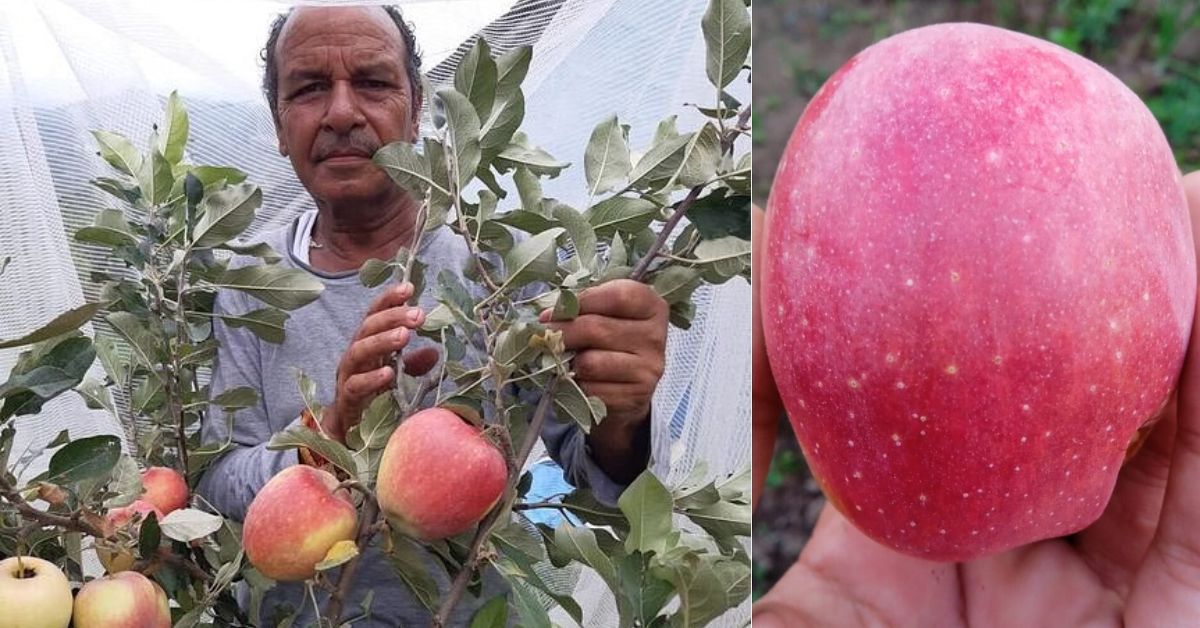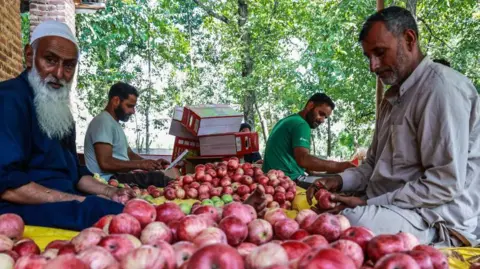In a small village in Maharashtra, where temperatures can rise to 43°C, farmer Kakasaheb Sawant is doing the unthinkable—growing India apple. “My neighbours thought I’d lost my mind,” he says, recalling his 2022 decision to plant 100 apple saplings in the subtropical heat. Against all odds, 80 survived, and some trees produced up to 40 kg of fruit each last year.
While the apples are not yet sweet enough to be commercially viable, Mr. Sawant’s farm has become a local marvel. His optimism reflects a growing national need: India apple demand is soaring, and production isn’t keeping pace.
India’s Apple Demand vs Supply Gap
According to apple trade analyst S. Chandrashekhar, India’s apple production has increased by 15% in the last five years, reaching 2.5 million tonnes. Yet imports have doubled to 600,000 tonnes in the same period. “We do have a shortage of apple production,” he warns. With little new investment and aging orchards, the yield in traditional regions like Jammu & Kashmir and Himachal Pradesh is falling.
The Chilling Truth Behind Apple Farming
Apples require extended exposure to winter temperatures between 0°C and 6°C—up to 1,000 hours annually—for optimal growth. While the UK meets these conditions easily, most Indian regions do not. Climate change has worsened this challenge, reducing chilling hours and threatening the future of India’s apple belt.
Low-Chill Varieties: A Possible Solution?

To overcome the climatic barriers, researchers are experimenting with low-chill apple varieties—trees that require only 400 hours of chill. At Birsa Agricultural University (BAU) in Ranchi, a non-traditional apple region, 18 saplings of three such varieties are under trial. Dr. Majid Ali of BAU says only one variety has borne fruit so far, with yields of just 1–2 kg in 2024. Termite attacks, poor soil, and heat remain obstacles India apple.
“This is an experimental stage,” Dr. Ali explains. “We need three to four more years to see whether this can work.” Some farmers in Ranchi are also trying low-chill varieties, but with limited success.
Experts Remain Cautious
Dr. Dinesh Thakur from the Dr YS Parmar University of Horticulture and Forestry in Himachal Pradesh is skeptical. “Low-chill apples can be grown as novelty fruit in a kitchen garden, but their viability as a commercial crop is not proven,” he says. He adds that climate change is already devastating traditional orchards due to erratic weather and reduced chilling hours.
Rising to Higher Grounds
As climate conditions shift, orchards are being moved to higher altitudes, previously too cold for apple farming. Dr. Thakur’s team is testing over 300 apple varieties to find climate-resilient genotypes. One of their breakthroughs includes a variety that matures two months earlier and ripens with better color—ideal for Indian markets where color affects perceived quality.
Reviving the Apple Economy
Despite scientific efforts, Mr. Chandrashekhar believes a revival of India’s apple economy will require serious investment. “Many orchards are 15 to 20 years old. They need replanting,” he says. He also recommends building a fruit processing industry—for juice, jam, and concentrates—to stabilize grower incomes and absorb surplus or subpar apples.
The Road Ahead

India’s journey to climate-resilient apple cultivation is in its early stages. While innovators like Kakasaheb Sawant lead by example, the long-term solution lies in a mix of scientific research, modern agritech, financial backing, and government support. As demand continues to outpace supply, the race for the perfect Indian apple is more than a novelty—it’s a necessity.









